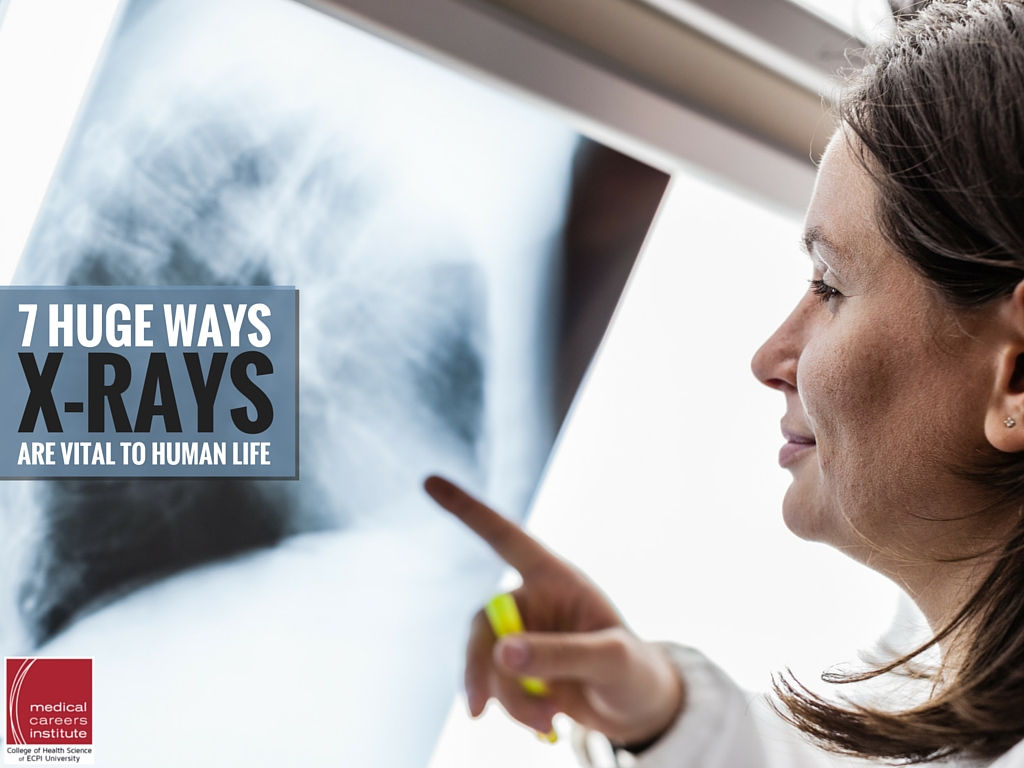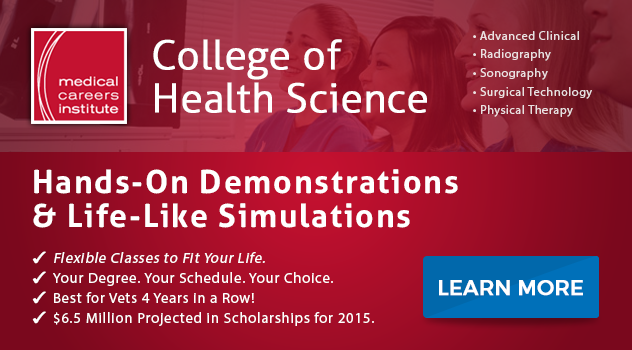
When Wilhelm Röntgen located a new form of radiation in 1895, he had no idea how powerful his discovery was. X-rays are a form of short-wave electromagnetic energy and because of their ability to move inside objects, they are useful in capturing images of that which cannot be seen with the naked eye and revealing the secrets of the human body - this is the wonder of radiography.
Today, x-rays have a huge variety of medical uses and are instrumental in improving and saving lives every day. Here are just a few:
1. Detecting Bone Fractures, Osteoperosis, and Other Skeletal Pathologies
Bone x-rays provide images of any bone in the body. Common bone images taken include hand, wrist, elbow, ankle, knee, hip, neck and spine, along with all the joints in the body. They are used to identify a fracture in a bone after an injury and other skeletal issues. A special type of x-ray, called a bone densitometry, is used to evaluate the strength of a patient's bones, and is useful in identifying the early effects of degenerative bone loss and osteoporosis.
2. Identifying Tooth Problems
X-rays are also used to determine problems with the teeth. Using small, specialized plate or film that fits inside a patient's mouth, these x-rays are used to provide comprehensive imaging of the entire dental landscape. They aid dentists and other doctors in identifying caries, cracked fillings and crowns, and periodontal disease. They not only help identify treatment courses but aid in minimizing the pain caused by dental work.
3. Pinpointing and Ameliorating Heart and Lung Diseases
X-rays are not only useful in evaluating bones but can also lend insight into the structure and function of organs, such as the heart and lungs. According to the National Institute of Health, chest x-rays are the most common form of x-ray used to diagnose physical disorders. They are useful in assessing the severity of pneumonia, determining the extent of heart failure, and diagnosing and monitoring lung cancer. Another cardiac-specific form of x-ray is a coronary angiography, which uses a special dye to see inside the coronary vessels. This is useful in examining the severity of plaque build-up in a patient's heart.
4. Evaluating the Spine
Along with evaluating coronary vessels, other specialized x-rays allow medical professionals to see inside other unique structures in the body. For example, myelography, which also uses a special contrasting dye, allows physical insight into the structure and function of the spinal cord. This is useful in diagnosing and evaluating disc herniation, spinal stenosis and degeneration, as well as spinal tumors.
5. Inserting Medical Devices
Though x-rays are often thought to be static images, real-time x-rays can also be taken to get a live, dynamic internal picture of the human body. This technique, fluoroscopy, in which a continuous x-ray image is projected onto a screen, can be useful in placing medical devices, such as stents, catheters and angiograms. Fluoroscopy is also a useful aid during surgeries, allowing surgeons to monitor internal patient progress in real time.
6. Screening for Colon Cancer
X-rays can also be used in preventative measures. Regular screening for colon cancer has now become standard procedure for many patients, especially those with a known history of colon or other cancers. A virtual colonoscopy is a unique kind of computerized tomography (CT) that combines computer and x-ray imaging to gain a complete picture of a patient's entire colon. CTs are a common method of seeing inside many other organ systems and body regions in a detailed manner.
7. Treating and Beating Cancer
Along with preventing and diagnosing cancer, x-ray is also useful in treating and beating the disease. Radiation therapy is the use of x-rays and their ionizing properties to infiltrate and destroy malignant cells. This is a common therapy used in cancer treatment to curtail the growth of cancerous tumors. It can be used not only to trump cancer, but, in cases in which remission is considered medically unlikely, radiation therapy can also be used as a palliative measure to extend longevity and reduce suffering.
I loved my experience at MCI, I graduated in 2004 and we had the best instructors.....Mrs. Ghia Callawagon was my favorite she went above and beyond to help her students graduate the program.....
Posted by Atia Scott on Wednesday, May 6, 2015
Are You Feeling Excited About Radiography Yet?
So much in the medical profession is made possible by these short waves. Children get their cavities filled and their broken bones set. Seniors can understand the severity of their osteoporosis and learn how best to cope with it. Middle-aged adults can get regular colon cancer screening and rest easy knowing their bodies are safe. Women fighting breast cancer can seek remission and outlive their diseases. X-rays are a phenomenal tool and a wonder of modern medicine.
Would you like to be a part of this wonder? Would you like to help patients near you come to understand their health and futures better with a career in radiography? Contact ECPI University today to find out more information about how you could earn your Associate of Applied Science in Medical Radiography in as little as 19 months. Take the first step towards your new life -”it could be the Best Decision You Ever Make!
DISCLAIMER – ECPI University makes no claim, warranty or guarantee as to actual employability or earning potential to current, past or future students or graduates of any educational program we offer. The ECPI University website is published for informational purposes only. Every effort is made to ensure the accuracy of information contained on the ECPI.edu domain; however, no warranty of accuracy is made. No contractual rights, either expressed or implied, are created by its content.
For more information about ECPI University or any of our programs click here: http://www.ecpi.edu/ or http://ow.ly/Ca1ya.


